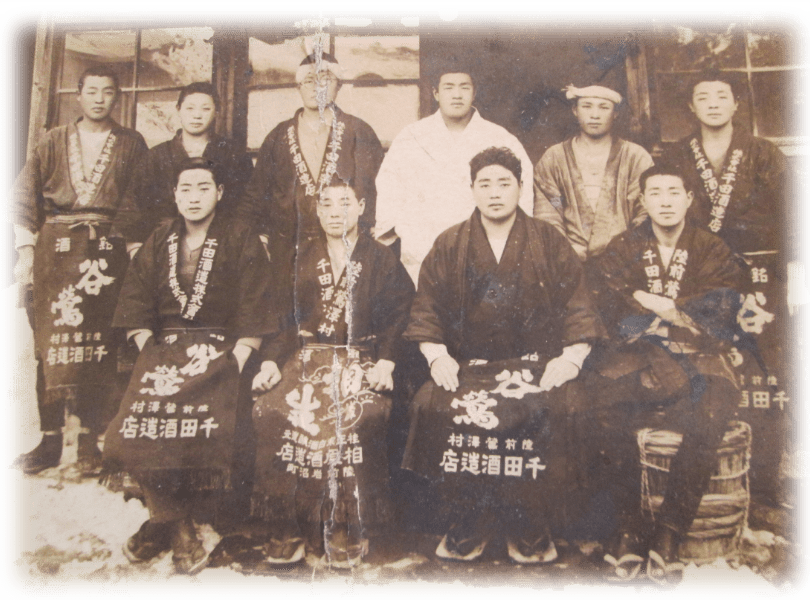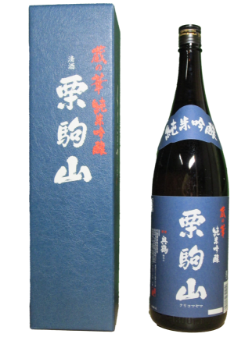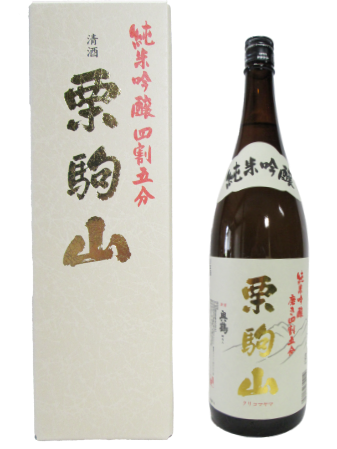By entering this website, you certify that you are of
legal drinking age in the country you reside in.
Are you of legal drinking age?

“Water” is the life of “Sake brewing”.
Good rice and excellent brewer can be brought from afar.
However only “Water“ cannot be moved.
A large amount of 'water' is required for sake brewing, starting with washing the rice and allowing it to absorb water, through to brewing and splitting the sake and cleaning the brewery.
This commitment to water has continued since the first president, who was so distressed at not being able to produce the sake he wanted at the time that he moved the entire brewery to its current location in search of better 'water'.
Even today, subsoil water from Mount Kurikoma, a famous mountain that straddles the three prefectures of Miyagi, Iwate and Akita, gushes out from a well on the property.
The brand name 'Kurikomayama' was created out of gratitude for the blessings of nature.

If the sake and food do not match, they cannot be fully enjoyed.
On the other hand, if the sake is a good accompaniment to the food, it can be enjoyed together.
It is crisp and fresh, unobtrusive and complementary, and goes down the throat with ease.
Brewing sake is not a straightforward process, and things often don't go the way we want them to.
Nevertheless, we learn from our many mistakes, while keeping our heads above the whims of nature,
We are serious about our brewing, one by one and with care.

The name was derived from the deep green of the famous Mt. Kurikoma,
the crystal clear fresh water, and the fact that we are all blessed with the bounty of the earth.
We strive to brew sake in an honest manner, never embellishing, and never boasting.





1,800 ml / 720ml
This is an impressive sake with a gorgeous aroma and a clear, clean taste.
This is a well-balanced bottle with a gorgeous aroma and a clear taste,
It is an elegant sake to enjoy.
15%
Wide range of dishes and appetizers

1,800 ml / 720ml
This sake is characterised by its refreshing acidity and fresh, citrus-like aroma.
The robust flavour and refreshing acidity do not interfere with the flavours of the food,
Recommended as a mid-meal drink.
15%
Chinese food
Salty appetizers (cheese, cured ham, etc.)

1,800 ml / 720ml
This sake has a light mouthfeel and a gentle, apple-like aroma that keeps you from getting tired of drinking it.
With its light acidity and fresh aroma, it is a sake that even those who are not good at drinking can fully enjoy.
15%
Japanese food
Light appetizers

1,800 ml / 720ml
This is the standard and recommended sake of Kurikomayama.
The fresh aroma and elegant acidity enhance the taste of the food and the aftertaste of the dish is easily washed away,
The moderate umami flavour advances the food.
15%
Compatible with a wide range of Japanese and Western food.
Particularly meat dishes, fried foods, etc.

1,800 ml / 720ml
This is a very easy-drinking sake with a mild mouthfeel and refreshing aroma.
The elegant bitterness is also a good accent and gives a crisp aftertaste to dishes.
15%
Fish dishes (tempura, sashimi, etc.)

